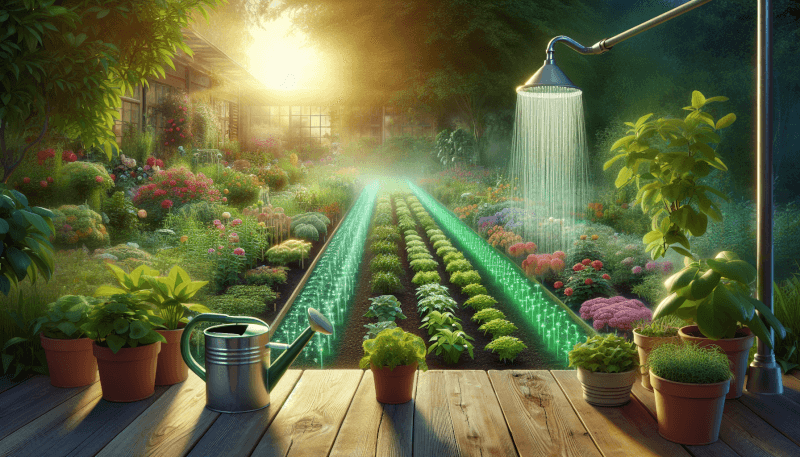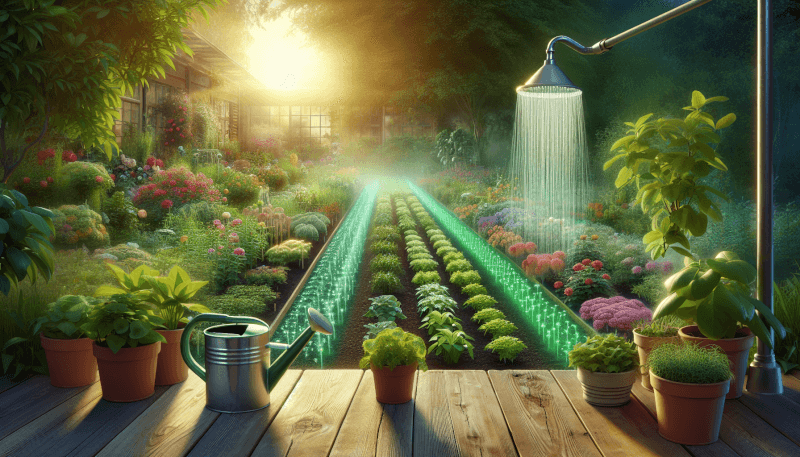Are you a busy gardener who struggles to keep up with watering your plants? If so, we’ve got just the solution for you! In this article, we’ll explore DIY garden watering systems that are perfect for those with a tight schedule. Whether you’re a beginner or an experienced gardener, these systems are easy to set up and will help ensure your plants receive the hydration they need, even when you’re short on time. Say goodbye to wilted plants and hello to a thriving garden with these fantastic DIY watering systems.
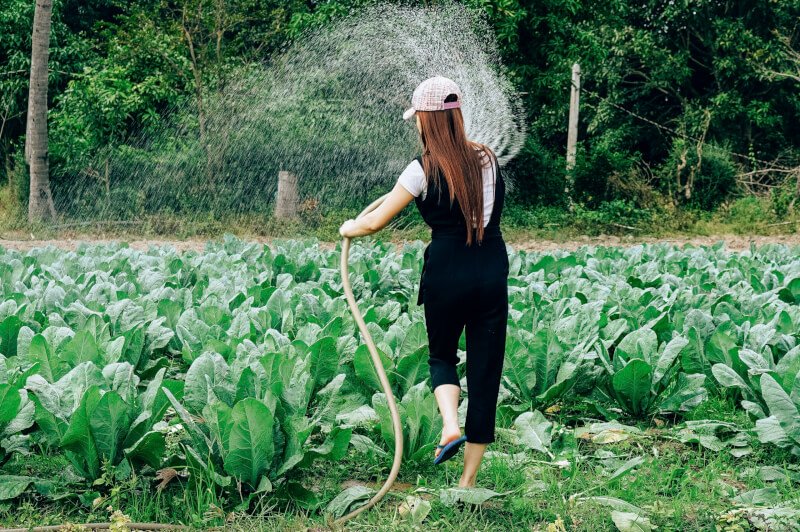
Drip Irrigation Systems
Introduction to Drip Irrigation
Drip irrigation is a highly efficient and precise method of watering plants in your garden. It involves the use of a network of tubes or pipes that deliver water directly to the roots of each plant, minimizing water wastage and ensuring that plants receive the right amount of moisture. This system is ideal for both small and large gardens, and it can be easily customized to fit various plant types and layouts.
Components of a Drip Irrigation System
A typical drip irrigation system consists of several key components. Firstly, you will need a water source, which can be a faucet or a water storage tank. Next, you will need a mainline pipe to transport the water throughout your garden. Subsequently, emitters or drippers are installed along the mainline to release water slowly and evenly to each plant. In addition, you will need fittings and connectors to join the various components together, as well as a pressure regulator and filter to ensure that the water pressure and quality are suitable for the system.
Installation and Setup
Installing a drip irrigation system may seem intimidating, but it can actually be quite simple with proper planning and preparation. Start by measuring your garden and determining the length of the mainline pipe needed. Lay out the pipes and emitters according to your garden layout, making sure they are evenly spaced and positioned near the plants. Connect the various components using fittings and connectors, and secure them in place with stakes or clamps. Finally, connect the system to a water source and test for any leaks or issues before covering the pipes with mulch or burying them underground.
Maintenance and Troubleshooting
Once your drip irrigation system is up and running, it requires minimal maintenance. Regularly check for clogged emitters or damaged pipes, and clean or replace them as needed. Ensure that the water pressure and flow rate are within the recommended range to prevent over or under-watering. In case of any issues, consult the manufacturer’s instructions or seek assistance from a professional. With proper maintenance, your drip irrigation system will provide efficient watering for your garden for years to come.
Soaker Hose Systems
Introduction to Soaker Hose Systems
Soaker hose systems, also known as porous or drip hoses, are a simple and cost-effective way to water your garden. These hoses are made of a permeable material that allows water to seep through slowly and evenly along the entire length of the hose. The water is released directly into the soil near the plants’ roots, reducing evaporation and ensuring efficient water delivery.
Benefits of Using a Soaker Hose
Using a soaker hose offers several benefits for busy gardeners. Firstly, it saves time and effort as you can set up the hose to water your garden while you attend to other tasks. Secondly, it promotes deep root growth by delivering water directly to the plant’s root zone. This results in healthier plants that are more resistant to drought and diseases. Additionally, soaker hoses are highly efficient, reducing water runoff and minimizing water wastage.
Choosing the Right Soaker Hose
Selecting the right soaker hose is crucial for optimal performance. Consider the material and quality of the hose, ensuring that it is durable and designed to withstand exposure to sunlight and varying weather conditions. Pay attention to the hose’s length and diameter, as these factors will determine the coverage area and water delivery rate. It is also helpful to choose a soaker hose with built-in regulators to control the water pressure and flow.
Installation and Usage Tips
Installing a soaker hose system is straightforward. Begin by determining the length of hose needed to cover your garden area. Lay the hose along the rows or around the plants, making sure it is positioned close to the plants’ roots. Secure the hose in place with stakes or clips, and connect it to a water source using a hose connector. Prior to using the soaker hose system, run a test to determine the watering duration needed for your garden, and adjust accordingly. Remember to monitor the soil moisture regularly and adjust the watering schedule as needed.
Sprinkler Systems
Introduction to Sprinkler Systems
Sprinkler systems have long been a popular choice for garden watering due to their versatility and ease of use. These systems consist of a network of pipes with sprinkler heads that distribute water over a designated area. Sprinkler systems are suitable for various garden sizes and layouts and can be automated for convenience.
Types of Sprinkler Systems
There are several types of sprinkler systems available, each with its own advantages and considerations. Spray sprinklers release water in a fan-shaped pattern, suitable for small to medium-sized gardens. Rotating sprinklers, on the other hand, have adjustable nozzles that rotate to distribute water in a circular or arc pattern, making them ideal for larger areas. Impact sprinklers are known for their durability and range, making them suitable for large gardens or agricultural use. Finally, micro-sprinklers are designed for precise watering of individual plants or specific areas in your garden.
Planning and Design
Before installing a sprinkler system, it is essential to plan and design the layout to ensure efficient coverage and minimal water waste. Consider factors such as the size and shape of your garden, the water requirements of different plants, and any obstacles or slopes that may affect water distribution. Divide your garden into zones based on the water needs of different areas or plant types, and determine the number and positioning of sprinkler heads accordingly. A well-designed sprinkler system will provide even water distribution and minimize overspray or runoff.
Installation and Maintenance
Installing a sprinkler system may require professional assistance to ensure proper installation and prevent costly mistakes. However, if you are confident in your DIY skills, you can attempt the installation yourself. Begin by digging trenches to lay the pipes and connect the sprinkler heads. Install the necessary valves, backflow preventers, and timers to automate the system. Test the system thoroughly before covering the pipes, and adjust the sprinkler heads’ positions if necessary. Regular maintenance, such as checking for leaks, cleaning clogged nozzles, and adjusting water pressure or distribution, is crucial to keep your sprinkler system in good working condition.
Rainwater Harvesting Systems
Introduction to Rainwater Harvesting
Rainwater harvesting is a sustainable practice that involves collecting and storing rainwater for later use in your garden. This method not only conserves water but also reduces dependency on traditional water sources. Rainwater is an excellent alternative for watering plants, as it is free from chemicals, such as chlorine, which are commonly found in tap water.
Benefits of Rainwater Harvesting
The benefits of rainwater harvesting are numerous. Firstly, it reduces water bills by utilizing a free and abundant natural resource. Secondly, it provides plants with pure, chemical-free water, which can promote healthier growth and nutrient absorption. Additionally, rainwater harvesting reduces strain on local water sources, particularly during periods of drought or water restrictions. Finally, rainwater can be collected throughout the year and stored for future use, ensuring a sustainable water supply for your garden.
Types of Rainwater Harvesting Systems
There are various types of rainwater harvesting systems to choose from, depending on your needs and available space. The most common systems include rain barrels or tanks, which collect rainwater directly from rooftops via downspouts for immediate use. Larger-scale systems, such as underground storage tanks or cisterns, are suitable for collecting and storing larger volumes of rainwater. These systems often require professional installation and can be integrated with pumps or filtration systems for enhanced functionality and convenience.
Setup and Usage
Setting up a rainwater harvesting system involves several steps. Firstly, determine the suitable location for your rain barrel or tank, ensuring easy access for maintenance and water distribution. Install a diverter or filter system to prevent debris from entering the tank. Connect the downspouts to the storage container, and consider adding a filtration system if necessary. Regularly inspect and clean the tank, removing any debris or accumulated sediment. When using the harvested rainwater, consider the needs of your plants and adjust watering schedules accordingly. Always monitor the water level in the tank to ensure a sufficient supply.
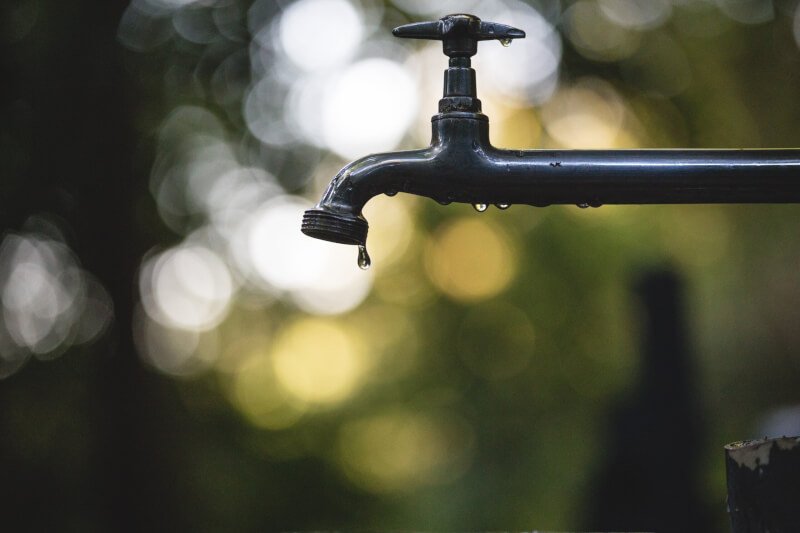
Self-Watering Containers
Introduction to Self-Watering Containers
Self-watering containers offer a convenient solution for gardeners who have limited time or space. These containers are equipped with built-in reservoirs that hold water, ensuring a steady supply to the plants’ roots. This system eliminates the need for frequent watering and reduces the risk of over or under-watering.
How Self-Watering Containers Work
Self-watering containers work on the principle of capillary action, utilizing a wicking material or mechanism to draw water from the reservoir into the soil. The reservoir is usually located at the bottom of the container, and the plants’ roots can access the water through small openings or wicking material. As the soil dries out, the plants naturally take up water from the reservoir, resulting in a self-regulating watering system.
Benefits and Drawbacks
Self-watering containers offer several benefits for busy gardeners. Firstly, they provide a consistent water supply, ensuring that plants receive the right amount of moisture without the risk of drying out or becoming waterlogged. This also reduces the frequency of watering, saving time and effort. Additionally, self-watering containers are particularly useful for small spaces or balcony gardens, where access to traditional watering methods may be limited. However, it is important to note that self-watering containers may require occasional refilling of the reservoir, especially during hot and dry periods.
Choosing the Right Container
When selecting self-watering containers, consider factors such as the size, material, and design. Choose containers that are appropriate for the size and type of plants you intend to grow. Ensure that the containers have a reliable watering mechanism and a sufficient capacity for the reservoir. Consider the material of the container, as certain materials may insulate the plants’ roots better and prevent water evaporation. Lastly, choose containers with good drainage to prevent waterlogging and root rot.
Gravity-Fed Systems
Introduction to Gravity-Fed Systems
Gravity-fed systems are simple and environmentally friendly solutions for garden watering. They utilize the force of gravity to provide a steady flow of water to your plants, eliminating the need for pumps or electricity. These systems are especially suitable for gardens that are located at a higher elevation or have a reliable water source at an elevated position.
Setting Up a Gravity-Fed System
Setting up a gravity-fed system requires careful planning and positioning of water containers or tanks. Begin by locating a suitable water source that is positioned higher than your garden. Connect a hose or pipe from the water source to a large container or tank in your garden. The container should be elevated and positioned at a higher level than the plants’ roots to allow gravity to distribute the water effectively. By ensuring that the container or tank is higher than the plants, the water will naturally flow downward through the hose or pipe.
Suitable Plants and Containers
Gravity-fed systems are versatile and can be used to water various types of plants. However, it is important to consider the water requirements and preferences of different plant species. Choose plants that are well-suited to a consistent and slow water supply. Additionally, select containers or raised beds that are compatible with gravity-fed watering. Ensure that the containers have appropriate drainage and are positioned at the correct height to receive water effectively.
Maintenance and Efficiency
Maintaining a gravity-fed system involves regular monitoring and occasional adjustments. Inspect the containers or tanks for any leaks or blockages, and clean or repair them as needed. To improve water efficiency, consider incorporating a drip irrigation system or soaker hose within the gravity-fed system to distribute the water evenly and directly to the plants’ roots. Regularly check the water level in the container or tank and replenish it as necessary. By optimizing the efficiency of your gravity-fed system, you can ensure a sustainable and low-cost solution for watering your garden.
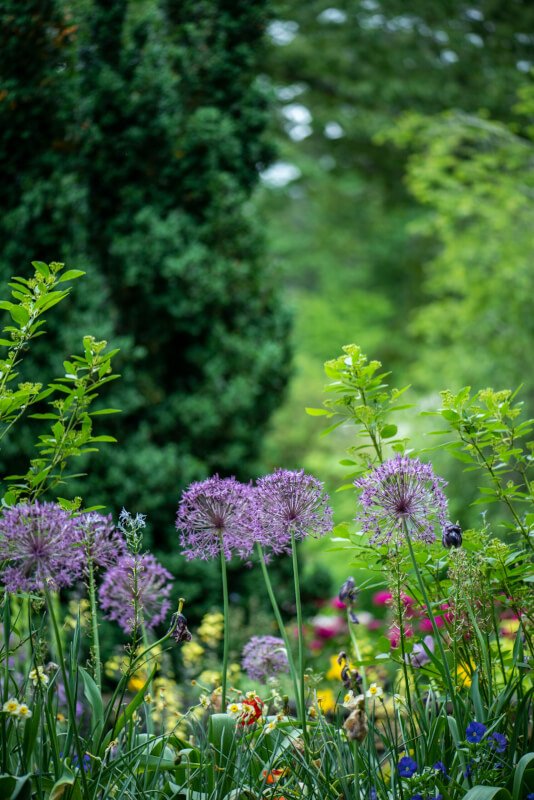
Timers and Controllers
Introduction to Timers and Controllers
Timers and controllers are essential tools for automating and optimizing your garden watering system. These devices allow you to set specific watering schedules and durations, ensuring that your plants receive the right amount of water at the most suitable times. Timers and controllers are available in various types and models, offering different features and functionalities.
Types of Timers and Controllers
There are several types of timers and controllers available, each designed for specific watering needs. Mechanical timers are simple and affordable, offering basic scheduling options. Digital timers provide more advanced features, such as flexible programming and multiple watering zones. WiFi-enabled controllers allow remote access and control through smartphone apps, providing convenience and real-time monitoring. Additionally, weather-based controllers use weather data to adjust watering schedules automatically, optimizing water usage based on local conditions.
Benefits and Considerations
Using timers and controllers for your garden watering system offers several benefits. Firstly, they ensure consistent and accurate watering, even when you are away or busy with other tasks. Secondly, timers and controllers can reduce water wastage by preventing over-watering or forgetting to turn off the system. This promotes water efficiency and helps conserve this precious resource. However, it is essential to consider factors such as the complexity of programming, power requirements, and compatibility with existing watering systems when choosing a timer or controller for your garden.
Installation and Programming
Installing a timer or controller is typically a straightforward process. Start by selecting a suitable location near the water source and within reach of the entire watering system. Connect the timer or controller to the water source and ensure that it is securely fastened. Follow the manufacturer’s instructions to program the desired watering schedule, taking into account factors like the plants’ water requirements and local weather conditions. Regularly check and maintain the timer or controller, replacing batteries or making adjustments as needed.
Smartphone and WiFi-enabled Systems
Introduction to Smart Watering Systems
Smart watering systems revolutionize the way we maintain and control our garden watering. These systems utilize smartphone connectivity and WiFi-enabled technologies to provide real-time monitoring and control of the watering process. With a simple app on your smartphone, you can easily adjust watering schedules, monitor soil moisture levels, and receive notifications about your garden’s watering needs.
Features and Benefits of WiFi-enabled Systems
WiFi-enabled smart watering systems offer a wide range of features to enhance your gardening experience. These systems often include soil moisture sensors, weather integration, and customizable watering schedules. By monitoring soil moisture levels, the system can adjust watering accordingly, preventing over or under-watering. Additionally, the integration with weather data allows the system to adapt to changing weather conditions, optimizing water usage and conserving resources. The convenience of controlling and monitoring your garden watering through a smartphone app provides flexibility and peace of mind for busy gardeners.
Controlling and Monitoring with Smartphone Apps
Smartphone apps for garden watering systems provide intuitive interfaces for easy control and monitoring. Through the app, you can set up personalized watering schedules based on plant types, soil conditions, and weather data. You can also manually start or stop watering, adjust the watering duration or frequency, and receive alerts or notifications when the system requires attention. Additionally, some apps offer data logging and historical records, allowing you to track the watering patterns and make informed adjustments or improvements to your garden watering practices.
Integration with Weather Data
The integration of smart watering systems with weather data is a key feature that enhances efficiency and water conservation. By accessing local weather forecasts or live data, the system can adjust its watering schedule based on factors such as rainfall, temperature, and humidity. For example, the system may reduce or skip watering if rain is predicted within the next 24 hours. This integration ensures that your garden receives the right amount of water without unnecessary wastage, while promoting healthy plant growth and reducing water bills.
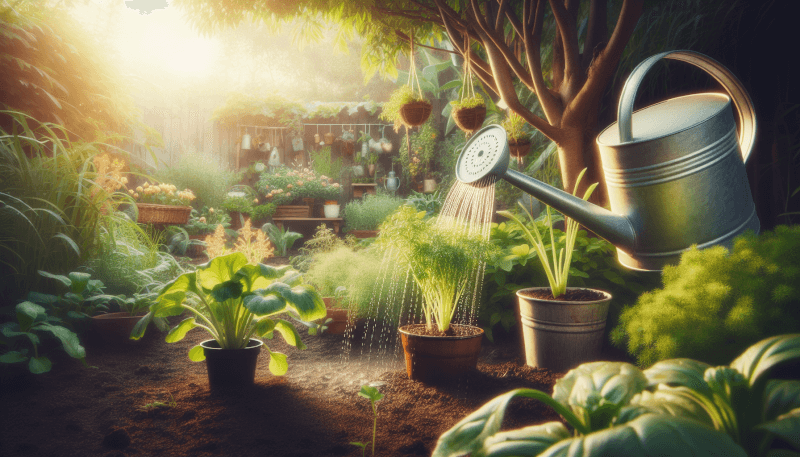
Sensor-based Systems
Introduction to Sensor-based Systems
Sensor-based systems take garden watering to the next level by utilizing sensors to monitor soil moisture levels and environmental conditions. These systems provide real-time feedback on the water needs of your plants, allowing for precise and efficient watering. By avoiding over or under-watering, sensor-based systems can significantly improve plant health and reduce water wastage.
Types of Sensors for Garden Watering
There are various types of sensors available for garden watering systems, each designed to measure specific parameters. Soil moisture sensors detect moisture levels in the soil and relay the information to the watering system. These sensors are particularly useful for preventing over-watering and ensuring plants receive the right amount of moisture. Additionally, weather sensors measure environmental conditions, such as temperature, humidity, and sunlight intensity. This data helps optimize watering schedules and adjust for changing weather patterns.
Monitoring Soil Moisture and Environmental Conditions
Sensor-based systems continuously monitor soil moisture levels and environmental conditions to provide real-time data for precise watering. Soil moisture sensors are strategically placed in the soil to measure moisture content and determine if watering is required. When the soil moisture falls below a certain threshold, the sensors send signals to the watering system to initiate watering. Weather sensors measure external conditions and adjust watering schedules accordingly. By considering factors such as temperature, humidity, and sunlight, the system can optimize watering for different plant types and changing weather patterns.
Usage and Integration
Using sensor-based systems involves integrating sensors with your existing garden watering system or opting for a system that includes built-in sensors. Position the sensors strategically to ensure accurate and representative readings of the soil moisture and environmental conditions. Set the desired moisture thresholds and watering preferences based on your plants’ water requirements and preferences. Regularly check and calibrate the sensors if necessary, and ensure that they are free from debris or blockages. By utilizing sensor-based systems, you can achieve precise and efficient watering, promoting healthy plant growth while conserving water.
DIY Solutions and Creative Ideas
Introduction to DIY Garden Watering Solutions
DIY garden watering solutions offer flexibility and cost-effectiveness for busy gardeners. These solutions often involve repurposing household items or utilizing creative techniques to meet your garden’s watering needs. With a little creativity and ingenuity, you can create unique and customized watering systems that cater to your specific garden requirements.
Clever Techniques and Hacks
DIY garden watering solutions often involve clever techniques and hacks to maximize efficiency and convenience. For example, you can repurpose plastic bottles or containers by puncturing small holes in them and burying them near the plants’ roots. Fill the containers with water, and the slow release through the holes will ensure gradual watering. Another technique is to use a wine bottle as a self-watering spike by filling it with water, inverting it, and burying the neck into the soil. Additionally, using a rain gutter or gutter extension can collect rainwater and divert it towards specific plants or garden areas.
Repurposing Household Items
Repurposing household items for garden watering is an eco-friendly and creative approach. For example, old soda bottles or milk jugs can be transformed into self-watering containers by adding wicking materials and creating a watering system. Unused PVC pipes or plastic buckets can be modified to create a simple drip irrigation system. Additionally, consider using plastic or rubber hoses to create DIY soaker hoses by drilling small holes along the length of the hose. Efficiently repurposing household items not only reduces waste but also provides low-cost alternatives for garden watering.
Low-cost and Eco-friendly Options
DIY garden watering solutions often prioritize cost-effectiveness and environmental friendliness. For example, collecting rainwater with homemade rain barrels or collection systems can provide a sustainable and free water source for your garden. Utilizing compost or organic mulch can improve soil moisture retention, reducing the need for frequent watering. Implementing mulching techniques or installing shade cloths can help prevent water evaporation and protect plants from excessive heat or sun exposure. These low-cost and eco-friendly options allow you to maintain a flourishing garden while minimizing financial and environmental impacts.
In conclusion, DIY garden watering systems offer diverse options for busy gardeners to maintain healthy and thriving plants. From drip irrigation to rainwater harvesting and sensor-based systems, each method has its own advantages and considerations. By selecting the most suitable system for your garden’s needs and utilizing creative techniques, you can ensure efficient water usage, time-saving solutions, and a beautiful garden to enjoy. Embrace the world of DIY garden watering and empower yourself with the knowledge and skills to create your own oasis of greenery.
